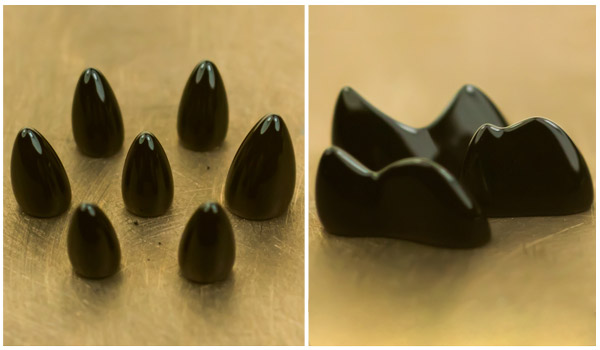Liquid undergoes magnetic ‘splits’
The demonstration helps scientists begin how molecules in plants and animals naturally alter their shapes
Share this:
- Share via email (Opens in new window) Email
- Click to share on Facebook (Opens in new window) Facebook
- Click to share on X (Opens in new window) X
- Click to share on Pinterest (Opens in new window) Pinterest
- Click to share on Reddit (Opens in new window) Reddit
- Share to Google Classroom (Opens in new window) Google Classroom
- Click to print (Opens in new window) Print
By Andrew Grant
On their own, proteins and other molecules in nature can warp and fold into new shapes. Scientists want to create synthetic structures that can alter their form much as the molecules in plants and animals do. A team in Europe has now tested a simple shape-shifting material.

Physicist Jaakko Timonen at Aalto University in Finland and his colleagues worked with liquids into which they suspended nanomagnets. Each only a few billionths of a meter in diameter, these particles can force the liquid to behave in strange ways when exposed to magnetic fields.
The researchers first placed a droplet of this “ferrofluid” atop a nonstick surface. Then they gradually moved a large magnet toward the surface from below. This increased the magnetic field exerted on the fluid. The droplet responded by splitting into one or more simple, evenly spaced daughter droplets. Timonen’s team reported its new findings July 19 in Science.
Timonen and his team also dragged the lower magnet back and forth below the surface, moving it increasingly faster and over longer distances. Videos show that under certain of these conditions, separate droplets suddenly joined together. This created elongated globs. And their shape changed as the magnet yanked them back and forth.
TIME TO SPLIT from Science News on Vimeo.
A dollop of a ferrofluid divides into daughter droplets (and several very small pellets). This shape-shifting occurs when the droplets are exposed to a magnetic field. Credit: Courtesy of Science/AAAS
Timonen says the demonstration should help scientists better understand how natural shape shifters do their thing. It might also offer clues to the design of synthetic materials that will morph on demand.







